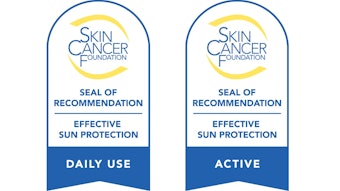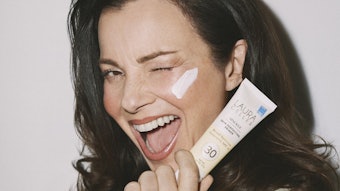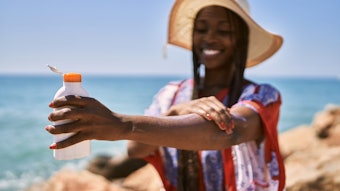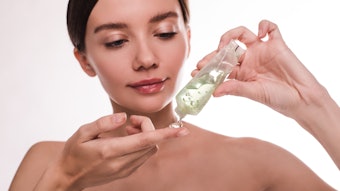
Sunscreens have shown very fast development in the last 40 years, driven by a series of emerging needs. At the beginning of this period, the attention was focused only on UVB radiation, which was considered the key factor responsible for immediate and evident skin damage. After that, scientists realized that both UVB and UVA are jointly responsible for biological damage. The negative effects of UVA radiation tend to accumulate over time and their mischief is revealed after many years. Moreover, UVA radiation is the main concomitant cause of skin photosensitization and phototoxicity.1
Log in to view the full article
Sunscreens have shown very fast development in the last 40 years, driven by a series of emerging needs. At the beginning of this period, the attention was focused only on UVB radiation, which was considered the key factor responsible for immediate and evident skin damage. After that, scientists realized that both UVB and UVA are jointly responsible for biological damage. The negative effects of UVA radiation tend to accumulate over time and their mischief is revealed after many years. Moreover, UVA radiation is the main concomitant cause of skin photosensitization and phototoxicity.1
The need to combat these effects led to the formulation of multi-efficient products that offered several benefits: UVB and UVA protection, water resistance, mildness for babies and applicability to wet skin without affecting the protection value. The number of consumers who use sunscreen products before sun exposure has, luckily, dramatically increased in recent years, along with the request for more personalized products.2
In addition, the formulator is faced with not only varying regulations covering the use and commercialization of sunscreen products,3 but also, more recently, new hurdles stemming from ethical, toxicological and environmental issues. Parallel to formulation developments is also the request for more efficient and reliable efficacy tests, going more deeply into the research.
Click through to the September 2019 digital magazine to read the complete article.
Wide Protection and Consumer Habits
Between 2006 and mid-2013, the attention of cosmetic companies was focused at first on guaranteeing the right balance between UVB and UVA protection, following the Recommendation of 2006/647/EC. Secondly, the new task was to protect the skin when taking into account the additional potential damage caused, according to the literature, by infrared (IR)4-6 and blue light7, 8 radiation. Numerous actives were consequently developed (or re-invented) in order to reach adequately wide protection.
The main functionality required for efficient protection against IR radiation is antioxidant/anti-free radical capacity9 and, secondarily, the capacity to easily dissipate the heat generated on the skin surface by sun rays. In this case, one of the most efficient ingredients described is boron nitride.10 The most recent efficacy evaluations for these new and complex formulations range from in vivo tests—to evaluate qualitatively or quantitatively the skin microcirculation, rash and skin temperature—to new in vitro tests for measurements of oxidative stress markers.
References
- Dupont, E., Gomez, J., and Bilodeau, D. (2013). Beyond UV radiation: A skin under challenge. Int J Cosmet Sci, 35, 224-232.
- Robles, M. C. (2017, June 18). Evolving Trends and Hottest Ingredients in Sun Protection. Retrieved from https://blog.euromonitor.com/evolving-trends-hottest-ingredients-sun-protection/
- Pirotta, G. (2015). An overview of sunscreen regulations in the world. H&PC Today, 10(4).
- Schroeder, P., et al. (2010). Photoprotection beyond ultraviolet radiation - Effective sun protection has to include protection against infrared A radiation-induced skin damage. Skin Pharmacol Physiol 23 15-17.
- Dupont, E., Gomez, J., and Bilodeau, D. (2013). Beyond UV radiation: A skin under challenge. Int J Cosm Sci 35 224-232.
- Cho, S., et al. (2008). Infrared plus visible light and heat from natural sunlight participate in the expression of MMPs and type I procollagen as well as infiltration of inflammatory cell in human skin in vivo. J Dermatol Sci 50 123-133.
- Bassel, H. M., Hexsel, C.L., Hamzavi, I. H., and Lim, H. W. Effects of visible light on the skin. Photochem Photobiol 84 450-462.
- Regazzetti, C., et al. (2018). Melanocytes sense blue light and regulate pigmentation through Opsin-3. J Invest Dermatol 138 171-178.
- Grether, S., et al. Effective Photoprotection of Human Skin Against Infrared A Radiation by Topically Applied Antioxidants: Results from a Vehicle Controlled, Randomized Study. Photochemistry and Photobiology 91(1).
- Zheng, J. C., et al. (2016). Thermal conductivity of hexagonal boron nitride laminates. 2D Materials 3(1).
Click through to the September 2019 digital magazine to read the complete article.










